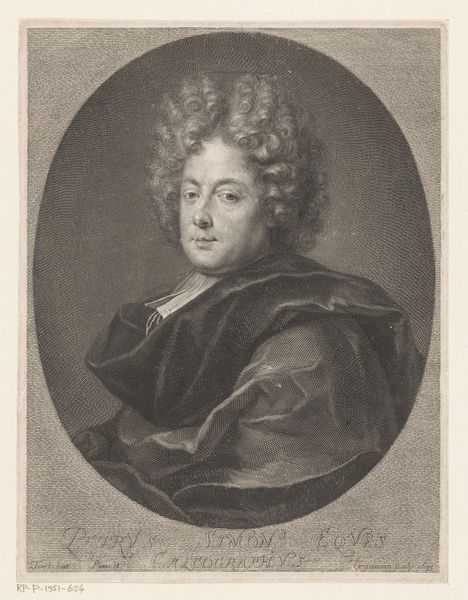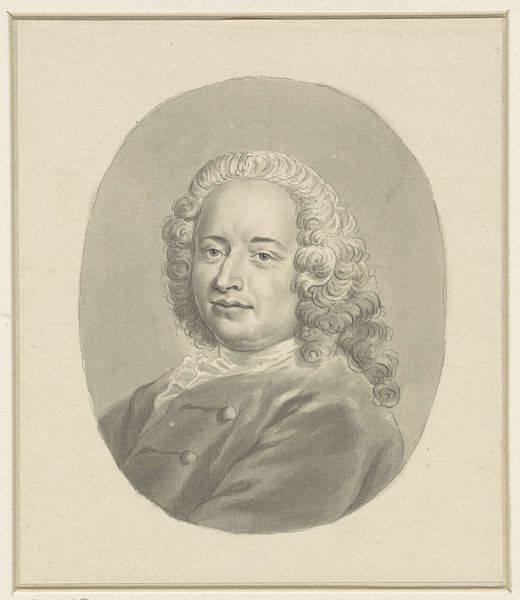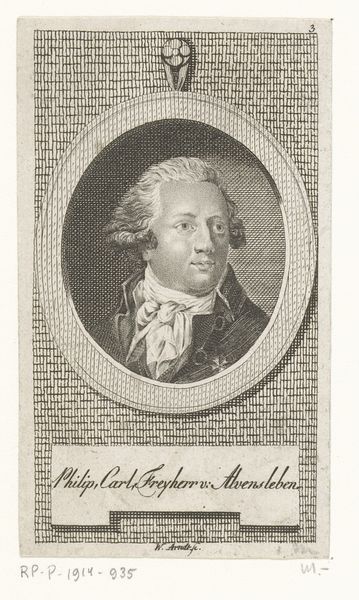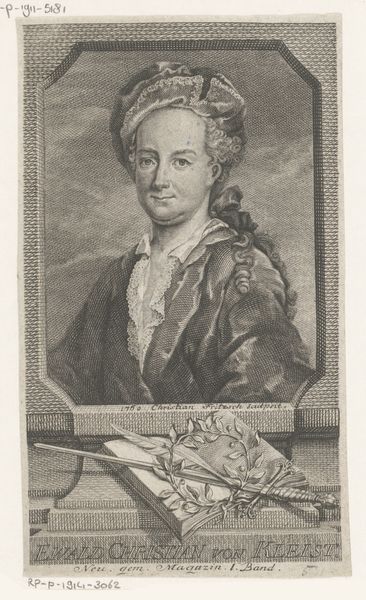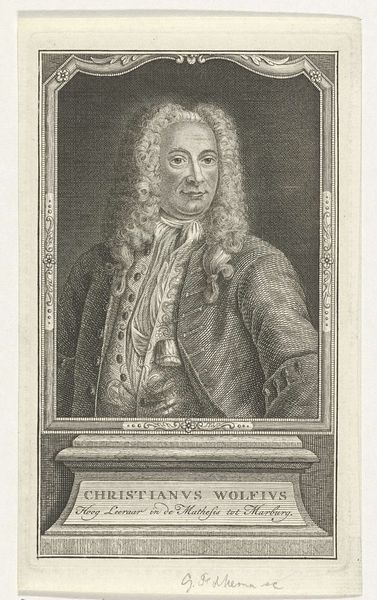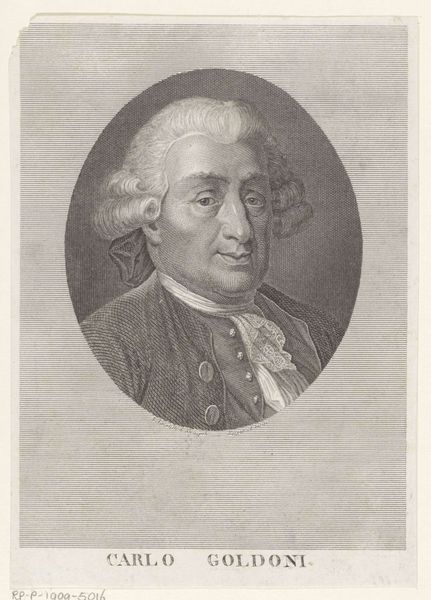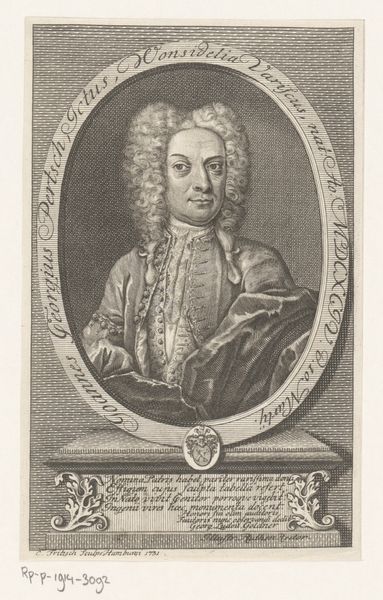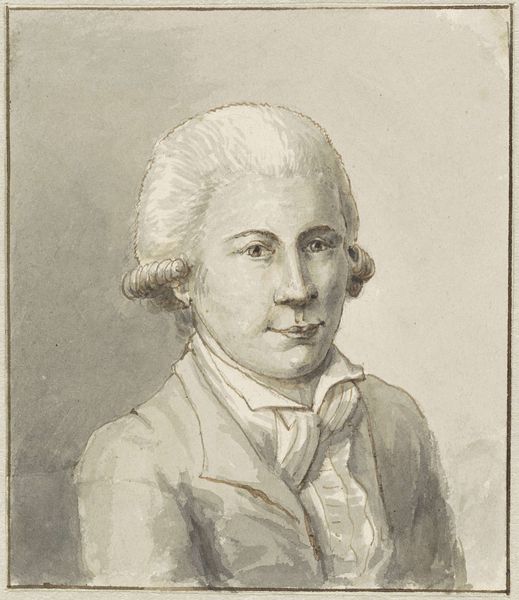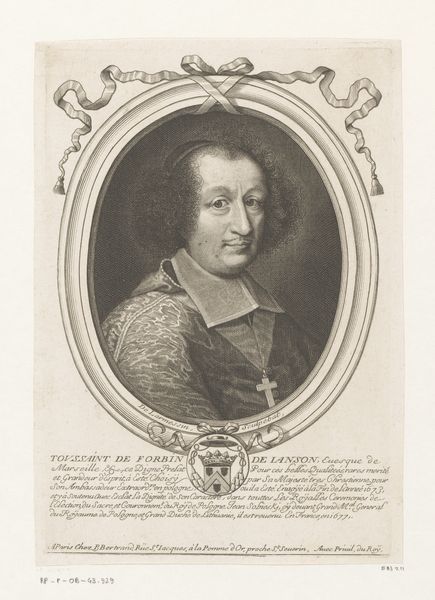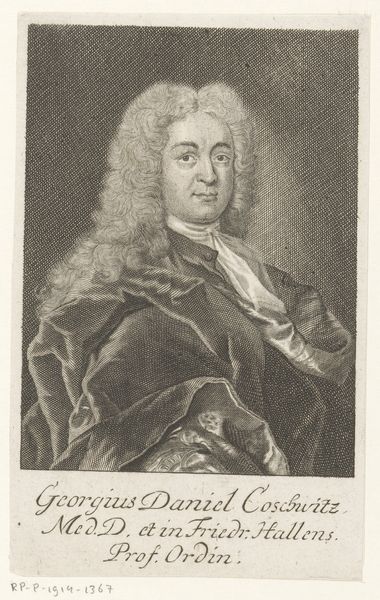
Portret van Charles Joseph Prince de Ligne after 1784
0:00
0:00
etching, engraving
#
portrait
#
neoclacissism
#
etching
#
caricature
#
portrait reference
#
pencil drawing
#
portrait drawing
#
engraving
#
portrait art
#
fine art portrait
Dimensions: height 228 mm, width 185 mm
Copyright: Rijks Museum: Open Domain
Curator: Welcome. Before us hangs a portrait executed via etching and engraving by Antoine Alexandre Joseph Cardon after 1784: “Portret van Charles Joseph Prince de Ligne,” held here at the Rijksmuseum. Editor: Immediately, I am struck by the sitter's aloofness and his… shall we say, overdone coiffure. It evokes a world of powdered wigs and aristocratic privilege on the brink of collapse. Curator: Observe Cardon's mastery of line. The intricate hatching and cross-hatching create subtle gradations of tone, defining the contours of the face and the texture of the clothing. It's a testament to the Neoclassical pursuit of controlled, rational representation. Editor: Rational, perhaps, but also complicit. The portrait exists as propaganda almost. The very medium — etching, with its inherent reproducibility— served to disseminate the image of power, reinforcing social hierarchies in pre-revolutionary Europe. Curator: One cannot deny the formal beauty in Cardon’s commitment to accurately portraying texture in clothing and hair. Look how light plays across his meticulously rendered jacket. His artistry lies in its intricate detail, achieving near photorealism despite it being an etching. Editor: But is that artistry not inherently political? While this "realism" seems objective, it really served to reinforce an unrealistic social ideal: an elite, leisured class insulated from the suffering of the masses. It glorifies that image of absolute power. Curator: But to reduce it merely to propaganda ignores its compositional strengths, namely the use of an oval frame that seems at odds with the right angles within his attire. In the lines, textures, the tonality is undeniable talent in capturing its subject with limited mediums. Editor: Agreed, but this level of "talent" only further solidified Prince Charles de Ligne’s dominance through flattering portraiture while France spiraled into revolution. We must consider the political weight these portraits carried. Curator: Thank you, a compelling sociohistorical framing adds an important layer of meaning to the careful semiotic interplay in the etching's construction. Editor: A vital intersection between power, privilege and portraiture… things we must constantly acknowledge to affect current intersectional imbalances.
Comments
No comments
Be the first to comment and join the conversation on the ultimate creative platform.
